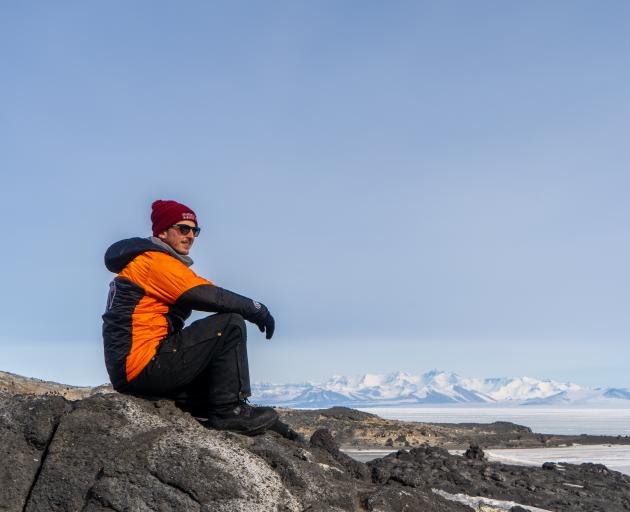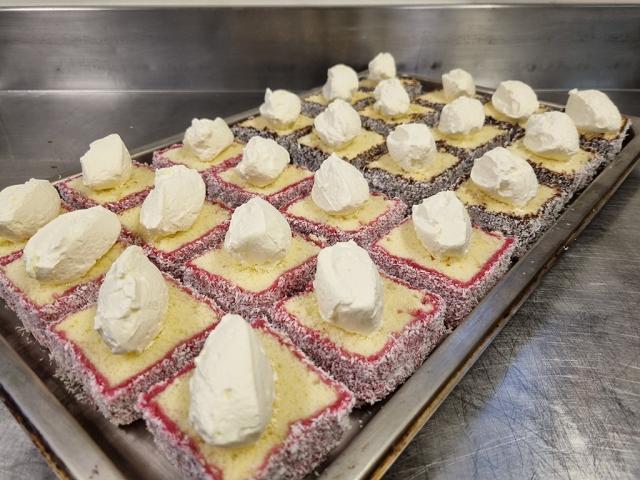

There are few places more extreme than Antarctica to spend your winter, but former Dunedin chef Paddy Rietveld is in his element even if the mean temperature at Scott Base in July is -29°C and there is no sunlight. He tells Rebecca Fox about cooking for the winter workforce.
Baking day is Paddy Rietveld’s favourite day especially when he pulls loaves of his favourite sourdough out of the oven.
“You can’t beat the smell,” the Dunedin born and bred chef says.
That is especially true at New Zealand’s Scott Base in Antarctica where Rietveld is wintering over as the chef for the season. Baked goods are especially appreciated particularly those nostalgic foods like a belgian slice and he loves experimenting with different types of breads.
“Things people grow up with, they can talk about, connect and reminisce when you are away from family and friends. It’s gone down a real treat this year.”
With only 12 people to feed over winter, Rietveld feels a bit like a private chef and is loving the challenge living and working 3500km from home even if it means forgoing fresh ingredients for months.
The food he cooks with is mostly frozen, dried or tinned brought in by ship at the start of the season. The only time he gets to cook with fresh ingredients is if a plane arrives in the summer.
“Getting some fresh eggs down here is a big hit - a fresh boiled egg has never tasted so good.”
It means he has to think outside the box and adapt some things which he enjoys as it pushes him to try different things.
“I was making some Easter hot cross buns but ran out of peel so I got the freshest oranges we had and before I gave them out to everyone I turned the peels into mixed peel.
“You don’t want to waste things given the amount of effort it takes to get it down here.”
He has also found baking in the “super dry” atmosphere of the base has taken a bit of adjusting to.
“I’ve found I have to use an extra 10% to 15% more moisture in baking. There are a few techniques you have to adapt to down here as it’s so dry. You have to keep things quite hydrated. ”
Rietveld, who used to be the chef at Wānaka cafe Relish, knows the issues as it is his second season wintering over and this year for the first time he has also done the summer season working alongside a couple of other chefs catering for up to 100 people at a time.
“It’s a bit more full on but it’s been pretty cool to see some of the science happening which is predominantly in the summer and be able to support that.”

“You have some amazing times. If it’s a really clear night and you go outside now you can see some awesome auroras and there are some amazing walks.”
Visiting Antarctica is something Rietveld has wanted to do since he saw a film festival work by photographer Anthony Powell Antarctica: A Year on Ice when he was 18 years old.
“I’d always wanted to work down here so I’d been working towards it.”
Visiting the ice for his first season in 2022 was just “unbelievable”, he says.
“It’s out of this world. You do feel like you are on another planet really with the abnormalities in temperature, change of light, the isolation. It’s pretty cool.”
The isolation of the place and the job does not phase him.
“I’m a pretty self-sufficient person and I really love my job.”
He loves how he can be creative and change things up so it is not just the same food day in and day out.
“It’s not the same old thing. It keeps food exciting for everyone else too which is key and keeps you on your toes constantly. Trying to come up with cool, fun ways is good and stimulating for the winter months.”
The variety of frozen and dried foods available these days, including frozen egg pulp, is quite extensive making nutritional diversity easy, he says.
Home-cooked favourites, like the nostalgic baking, go down a treat.
“Kiwi-style fish and chip Fridays, simple stuff like lasagne. It’s quite nice to see people excited about the food.”
With such a small crew over winter he has been able to learn people’s likes and dislikes and he keeps an eye on what is leftover on people’s plates. He also spaces out special meals so there is something to look forward to.
“Too much of a good thing can get boring. Occasionally I will test the waters with something out of the ordinary.”
Being smart about cooking by doing extra batches makes things easier as does freezing extra portions for a rainy day.
“You can mix and match lots of meals, if you make a Bolognese on a Monday, you can use it again in a few days time for a lasagne. Its a fun puzzle to work around.”
He makes yoghurt and granola for their “self-help” breakfasts as well as his favourite Danish Rugbrod bread for toast. Alongside lunch and dinner, he does a hot “smoko” every second day.
The crunch of fresh fruit and vegetables is something people miss so this year he has been providing carrot sticks which last a long time fresh if stored properly.
“Peeled carrots in little sticks go a long way. Just that fresh crunch, you underestimate it.”
Not all his time is spent in the kitchen. In the summer months he has been able to help out some of the science crews. He has also been out to the Dry Valleys.
“That was phenomenal. We also went to Cape Bird where there is close to 40,000 Adelies out there, to see so many penguins in one place, it’s out of this world.”
Rietveld, who has taken up photography since he has been on the ice, has always been a fan of the outdoors and nature and has been known to do some gold mining in his free time.
“The last couple of years I’ve been helping with the Wānaka Scout group. I was lucky enough to grow up with that and so it’s giving something back.”
He is also trained in pyrotechnics and has worked on many Queenstown Lakes fireworks displays over the past few years again, indulging his creativity and design urges.
“I’ve always been curious about how things worked, whether is is food or building or fireworks. Variety is quite good.”

Danish rugbrød
Paddy collected this recipe for Danish rugbrød on his travels but can’t remember where from. It has proved to be one of the favourites on baking day in Antarctica.
MAKES 1 LOAF
Soaked grains
215g whole rye grain or whole wheat or kibbled grain or a mix of them
150g lightly toasted sunflower seeds
15g salt
300ml water
Dough
200g strong bread flour
100g rye flour coarsely ground, stone ground is best
10g liquid malt extract or molasses
15g dutch cocoa
20g olive oil
100g of quick rye sourdough (made in advance)
150g warm water (30°C)
¼ tsp instant dry yeast
75g grated carrot
1 quantity of soaked grains
50g sesame seeds or 50 rye flour for topping (optional)
Method
Prepare the soaked grains in advance. Place all ingredients in a bowl, and mix to coat grains with water. Cover and leave at room temperature for 16-24 hours.
Place all dough ingredients in a mixer fitted with a beater. Mix on medium speed for 10 minutes, scraping down the sides of the bowl occasionally for an even mix. Alternatively you can mix by hand using a large metal spoon.
Grease a 19cmx11cmx11cm deep loaf tin. Once batter is mixed spoon into tin. Using your knuckles dipped in water, squash the batter into the corners of the tin then smooth it out with a spatula until level and smooth. Sprinkle sesame seeds on top.
Cover tin loosely with plastic wrap and leave to rise for 2.5 to 3 hours. Do not leave longer than this. In the last 30 minutes preheat oven to 250°C.
Remove wrap and place in oven. Immediately lower temperature to 180°C, then add a small oven-proof bowl of water for steam and close the oven door quickly.
Bake 60-70 minutes until the internal temperature of the loaf is 95°C.
Remove from oven and leave to set in the tin for 5 minutes before turning out on a wire rack to cool. Leave for 5-6 hours or preferably overnight wrapped in a clean tea towel before slicing.
Quick rye sourdough
25g strong bread flour
25g rye flour
30g natural unsweetened yoghurt
20ml warm water
⅛ tsp instant dry yeast
Method
Place all ingredients in a small bowl and mix with a wooden spoon. Cover and leave to ferment for 12-16 hours.
Then feed with 25g strong bread flour, 25g strong rye flour, 50ml cold water and mix until evenly mixed. Cover and leave to ferment for 12 hours.
Use 100g for the recipe and the rest feed again with the above amounts and keep in a refrigerator, feed every 10 days. Feed it twice before using again.















